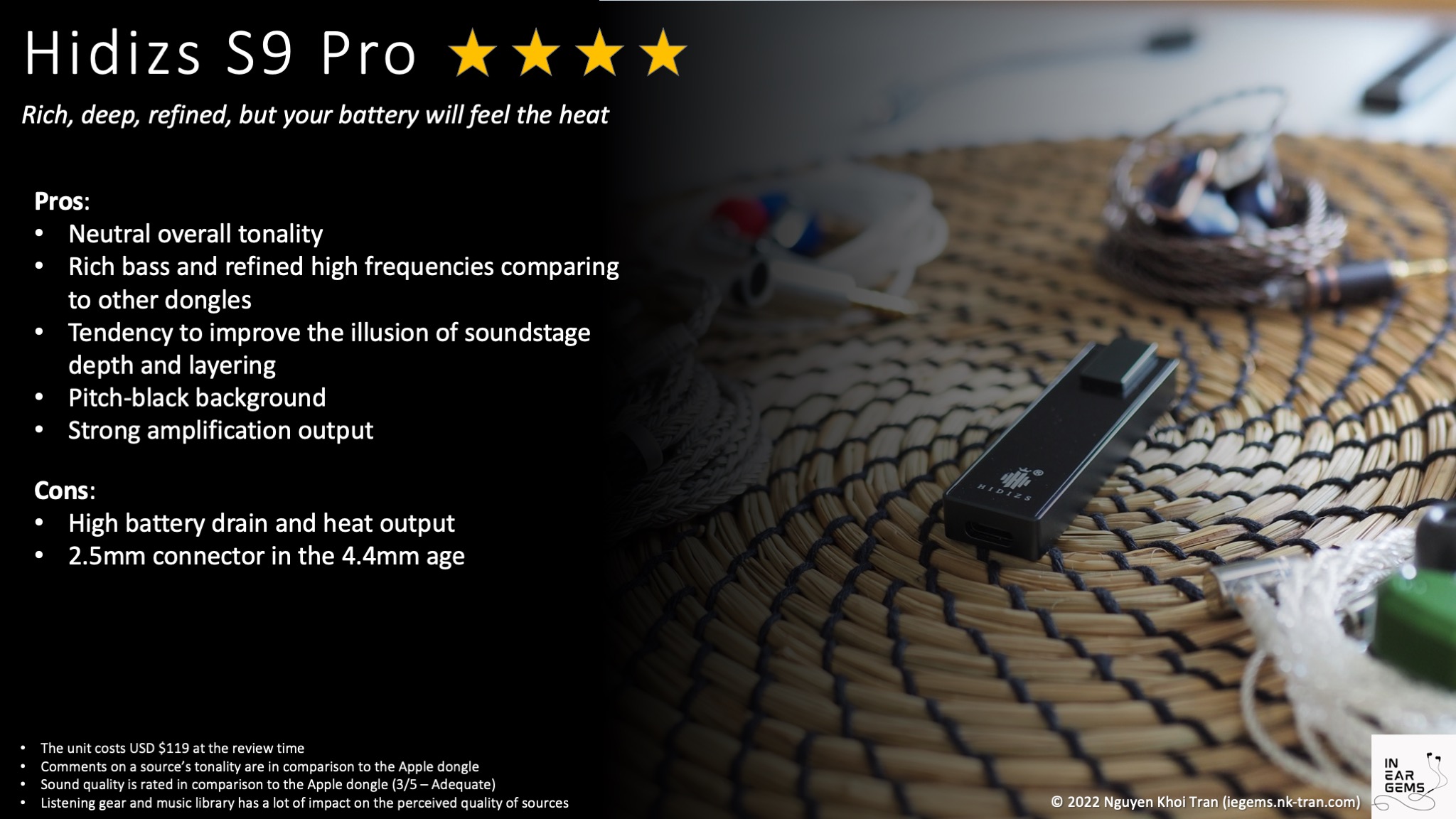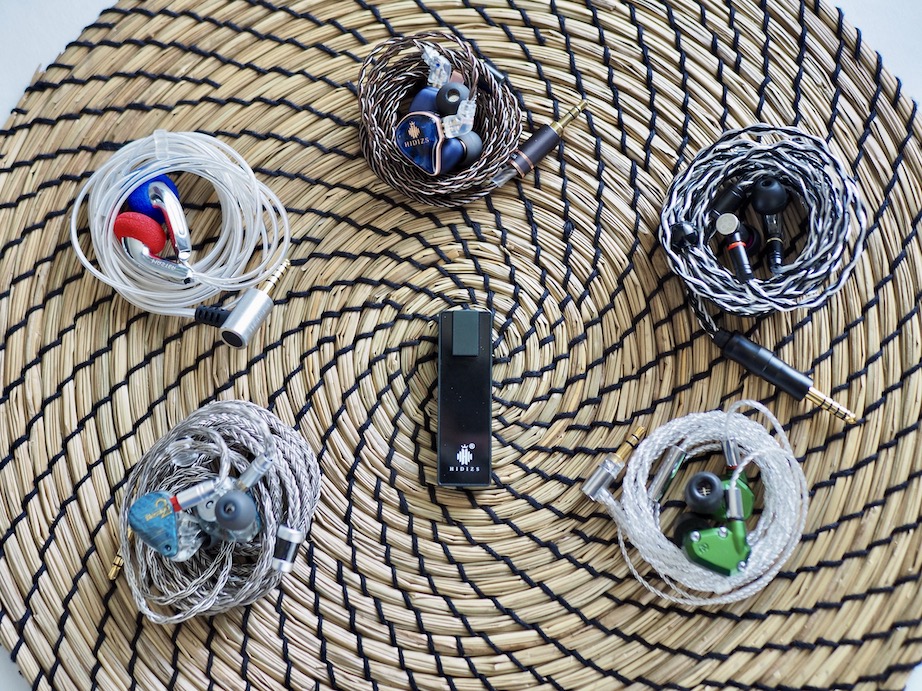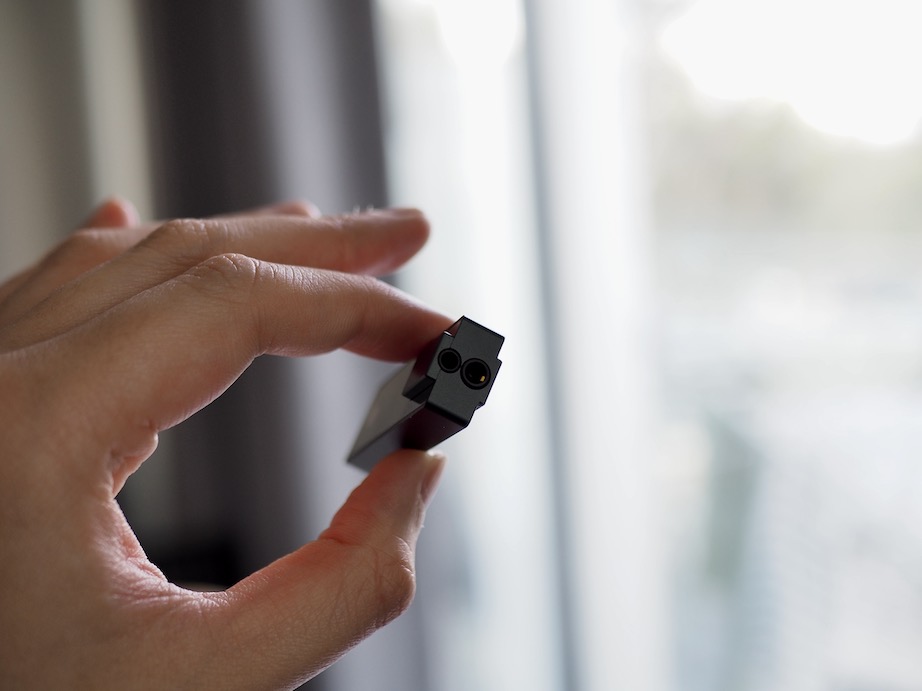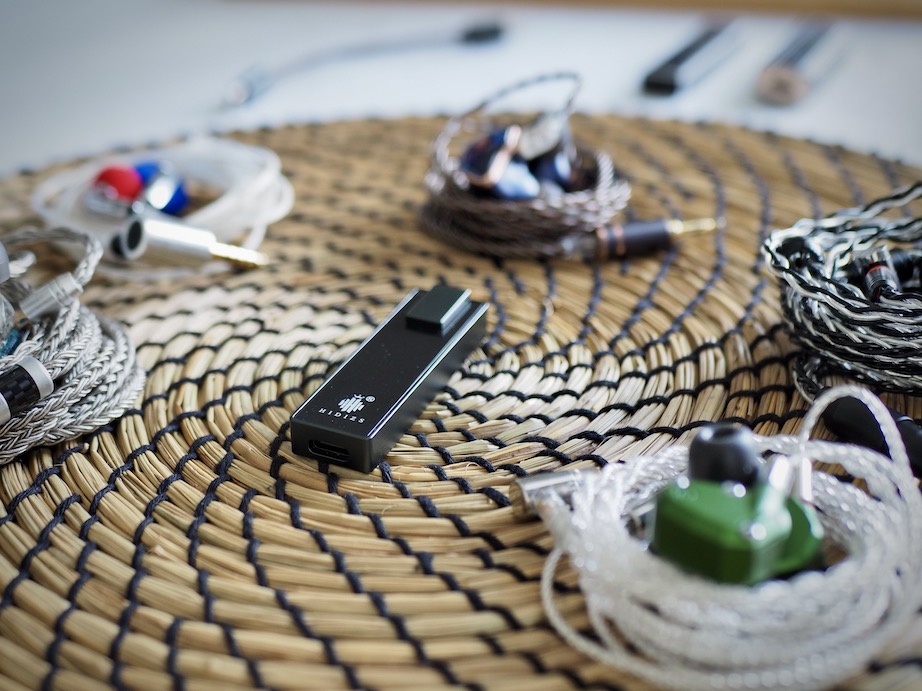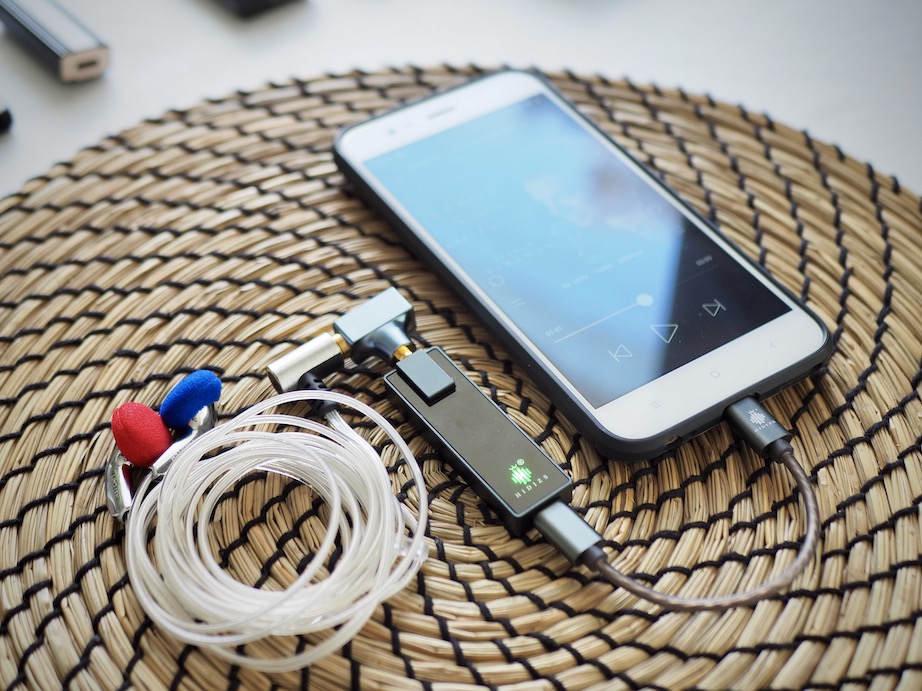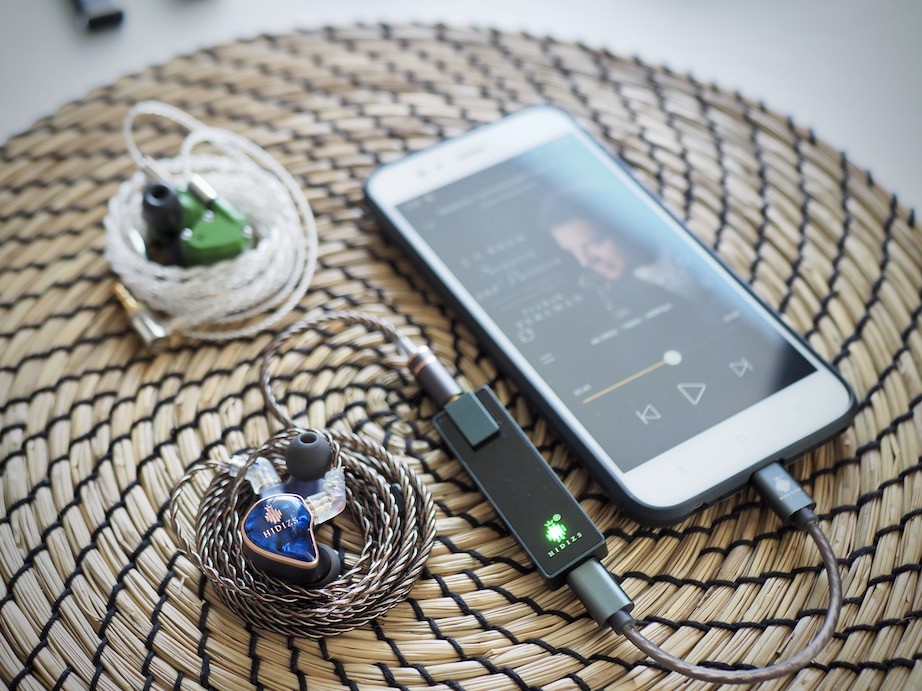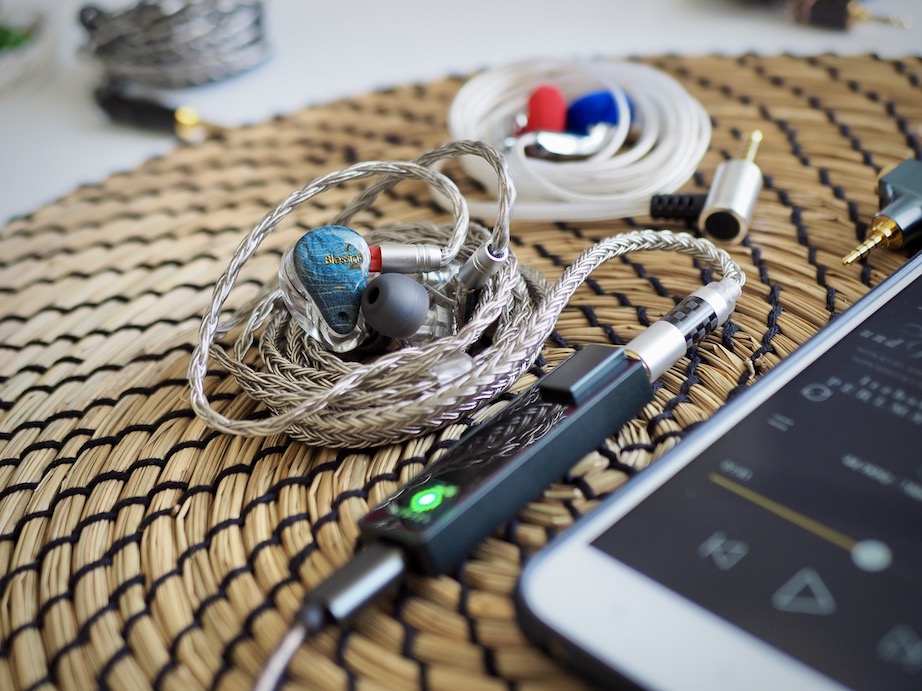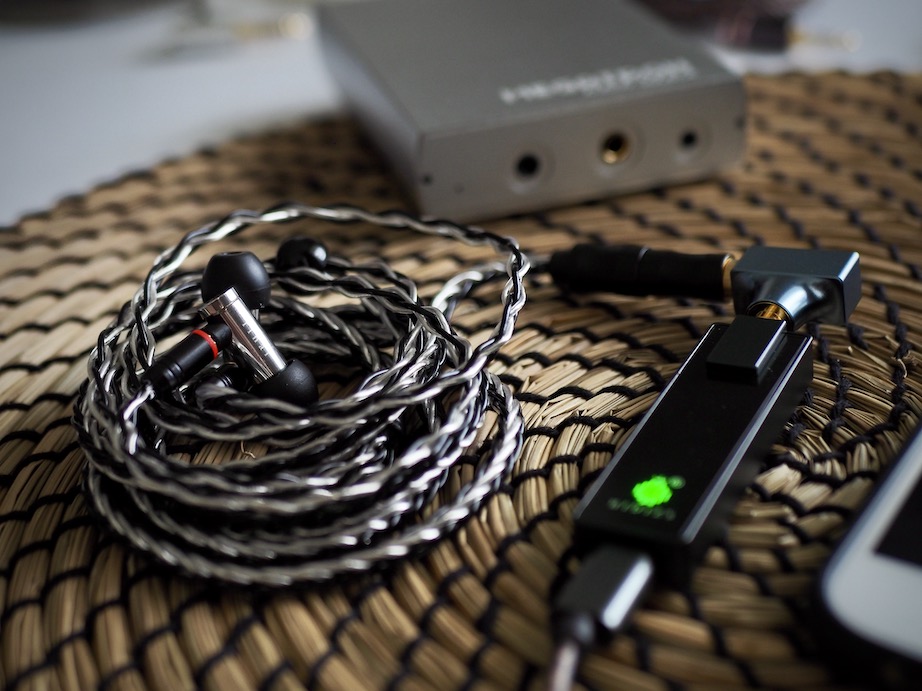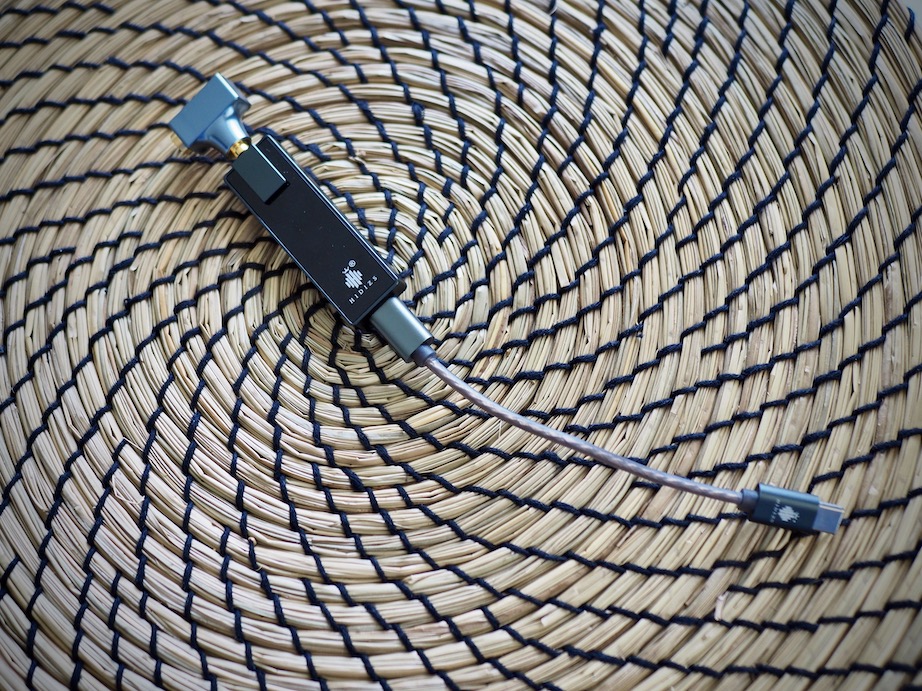Hidizs S9 Pro - Rich. Deep. Refined.

Why?
Well, you see, I’m a stubborn guy. When I started the head-fi hobby, Internet people told me that all modern audio sources sound the same and amplifiers are unnecessary for portable gear. I held onto that belief for the longest time and repeated the dogma, “Apple dongle is all you need.”
However, my belief began to waver as I experienced more pairs of sources and transducers. The little dongle DAC/AMP we discuss today might be my tipping point. Let’s talk about Hidizs S9 Pro.
Preambles:
- This review is based on a review sample provided by Hidizs (Thank you!) I have no financial interest in Hidizs or the success of this product.
- The Hidizs S9 Pro can be found on the manufacturer’s website (Non-affiliated link). The unit costs $119 USD ($188 AUD) at the time this review was published.
- I use the term “source” to denote a DAC + Amp combo.
- When I talk about the “sound” of a source, I talk about its impact on the sound of headphones or earphones connected to it. For example, a source is “bright” means it makes earphones brighter than other sources.
- A source is rated based on A/B tests. If one source sounds not as good as the other, I would bump up the volume and give it another try before concluding. This practice aims to mitigate the “louder is better” problem.
- I consider the Apple dongle a benchmark (3/5 - adequate) because it is good enough and familiar to almost everyone.
- Improvements from sources are primarily minor and nuanced, despite my textual descriptions. If you are beginning your head-fi journey, getting different IEMs or earphones would yield more benefits. If you know your gears very well, improvements from sources can be delightful
Specs:
- DAC Chips: ES9219C x 2
- Output ports: 3.5mm (Single-ended) and 2.5mm (balanced)
- Single-ended output power: 100mW@32ohm per channel
- Balanced output power: 200mW@32ohm per channel
- Recommended impedance: 8 - 300ohms
Handling and Usability:

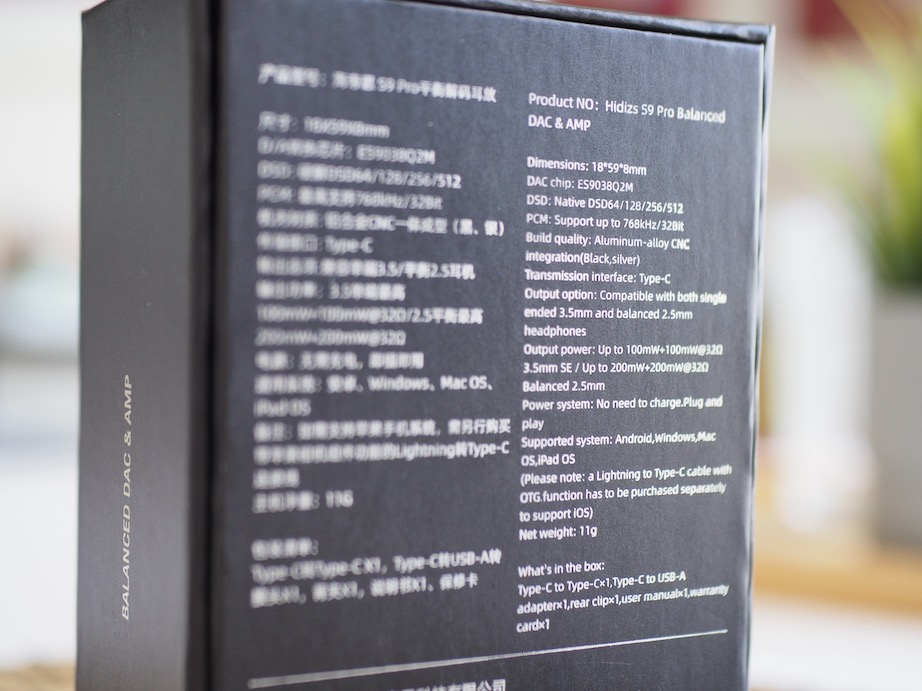
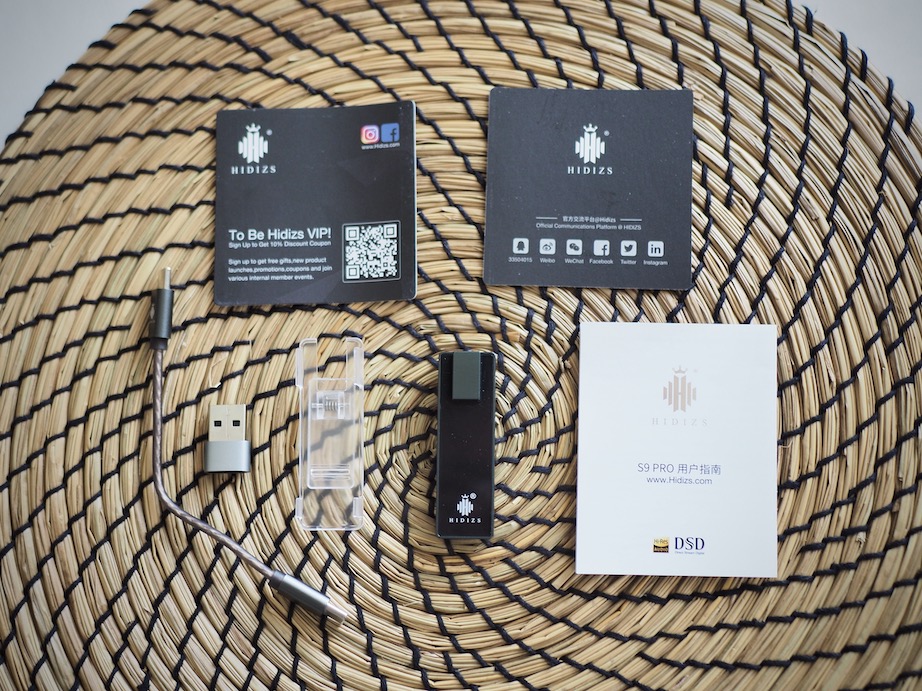
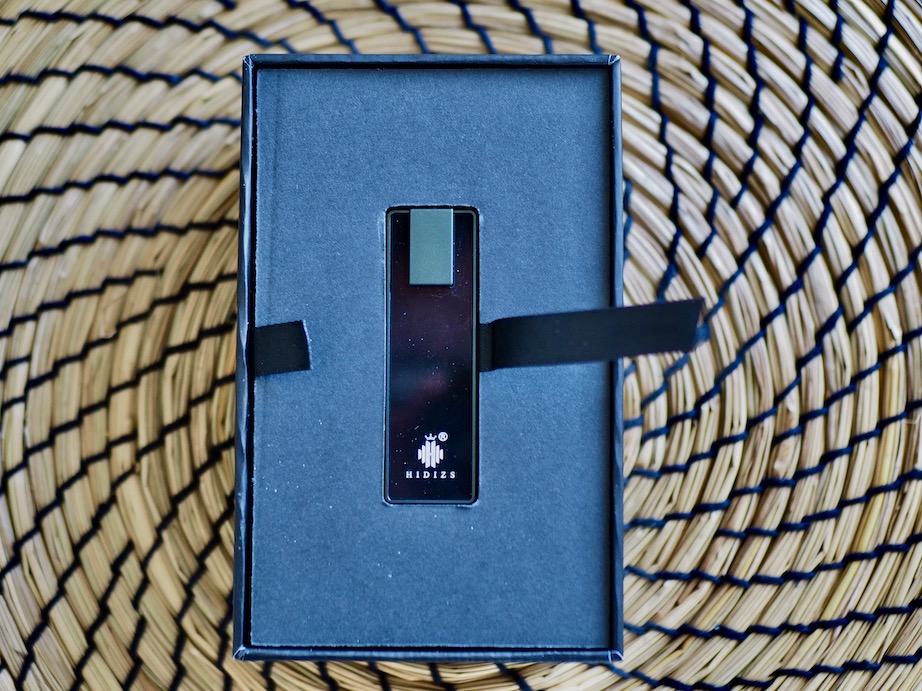
S9 Pro is a tiny stick of aluminium sandwiched by glass panels. It is narrower and thinner than my KA3, which is already smaller than an average USB memory stick. The Hidizs logo lights up upon connection to indicate the audio quality being played.
Using S9 Pro is straightforward: plug-and-play. However, there are some gotchas:
- The included cable is unidirectional. You must connect the plug with the logo to your phone or laptop. Otherwise, the dongle does not work. I have no problem with other cables.
- You need to use the lightning cable from Hidizs if you want to use S9 Pro with iPhone. My USB-C to Lighting cable from Fiio does not work. The phone recognizes S9 Pro, but the sound does not come out.
The S9 Pro is entirely devoid of physical buttons for volume and playback control. I prefer this design because I don’t have to worry about any hidden volume level that might give my ears a nasty surprise.
S9 Pro is also free of software settings. As far as I know, there is no app to change the gain, filters, or EQ.
Sound Performance
Rich, deep, refined.
If I must describe S9 Pro as fast as possible, those are the adjectives that I would use. This dongle makes music pop more than other sources in my current collection. Bass drums kick a bit stronger, snares sound tighter, and vocals have more nuances and air.
At the same time, higher-pitched instruments like violin, trumpet, cymbals, and hi-hats are a bit rounder. For example, let’s imagine a series of fast cymbal clashes. With most dongles in my collection, I would hear loud splashy sounds that mesh together and mask other details, such as stick impacts the subtle room reverb. With S9 Pro, the splashes are slightly rounded off and separated so I can hear stick impact and the reverbs.
Another good thing about S9 Pro is the pitch-black background. Thanks to the impactful low-end and refined top-end, instruments are a bit more separated from each other, with a darker background between them. The contrast between instruments and background does an excellent job of making the soundstage feels deeper.
Where do these sound characteristics come from? At first, I thought there were some tuning tricks baked into S9 Pro, such as a subtle bass boost. However, measurements by folks at Hi End Portable show a flat frequency response between 20 and 20000Hz, just like any other dongle in my collection. Since there is no tonality shift, I must attribute the great sound to the DAC implementation and powerful amplification of the S9 Pro.
Speaking of amplification, the output power of this little dongle is strong. It drives a full-sized HD800S to a respectable performance via single-ended output from an Android phone. At the same time, it is pitch-black when pairing with super-sensitive IEMs like Andromeda 2020.
This output power’s only drawbacks are battery drain and heat. Your phone will feel the heat of the S9 Pro, figuratively and literally. Therefore, despite the noticeably improved sound quality, I cannot use the S9 Pro with small devices like my Hidizs AP80 Pro X music player.
Some listening notes
Let’s clarify the points about the S9 Pro with some concrete music, shall we?
 Bach: Violin Sonatas & Partitas for Solo Violin performed by James Ehnes quickly becomes my favourite rendition of the famous violin solos. Exquisite violin tone, superb control over dynamic, and high recording quality. This album has everything. This album is also excellent for showcasing the beautifully refined upper frequencies and pitch-black background of the S9 Pro.
Bach: Violin Sonatas & Partitas for Solo Violin performed by James Ehnes quickly becomes my favourite rendition of the famous violin solos. Exquisite violin tone, superb control over dynamic, and high recording quality. This album has everything. This album is also excellent for showcasing the beautifully refined upper frequencies and pitch-black background of the S9 Pro.
Let’s take Presto movement from the first Sonata as an example. With my test gears, I hear Ehnes’s violin right in the middle of the soundstage, crisp and focused. I can hear articulations (bow catching on the string) and the sympathetic resonance of the violin. I can also hear the reverb of the violin around the “room”. The main improvement of the S9 Pro is the separation between the violin and the slight background reverb, which triggers the illusion of depth. This “depth” is the main draw of the S9 Pro compared to other sources in my collection, including the venerable Fiio KA3.

New Levels New Devils by Polyphia is a new discovery, introduced by my good friend JAnonymous5150. It still baffles me that this synthetic-sounding album is not generated by a computer but performed by musicians in a studio.
Let’s take G.O.A.T. as an example. I hear the better separation between guitars and other instruments in the higher frequencies. S9 Pro also imparts a greater sense of depth by separating and pushing background elements further to the back. This impression applies even to IEMs that do not convey depth very well, such as my Blessing 2.
Low-impedance, high-Sensitivity IEM
Tested gear: Hidizs MD4 (8ohm@1kHz, 102dB/mW@1kHz)
The difference between S9 Pro and the Apple dongle is startling in A/B tests with G.O.A.T. as the test track. In this case, the Apple dongle outright reduces the sound quality of the MD4. It makes everything more closed in and less separated. For example, the bass drop at around 0:35 sounds inside my head with the Apple dongle but slightly outside my ears with S9 Pro.
The difference between S9 Pro and KA3 is also noticeable in the same A/B tests. KA3 sounds noticeably brighter and thinner at the same time. It means high-pitched instruments are more splashy and less separated, whilst the bass lacks a bit of weight in comparison. KA3 renders G.O.A.T. as a wall of sound in-your-face rather than a complex 3D stereo image painted by S9 Pro.
Average IEM and earphones
Tested gears: VE Monk+ (64ohm, 118dB/mW), Moondrop Blessing 2 (22ohm, 117dB/Vrms), Sennheiser HD560S (120ohm, 110dB/Vrms)
First, let’s talk about A/B tests with VE Monk+ and Blessing 2. The story is similar to the low-impedance, high-sensitivity IEMs. S9 Pro sounds noticeably more contrasty and crisp, airier and micro-detailed with a stronger sense of depth compared to the Apple dongle. These differences can be heard clearly from the bass drop from around 0:35.
The KA3 and S9 Pro gap narrowed slightly with VE Monk+ and Blessing 2. However, KA3 is still noticeably brighter and splashier. For instance, all cymbal crashes from around 0:40 are louder and harsher. Even when I boost the volume of the S9 Pro to be noticeably louder than KA3, the tonality of the S9 Pro is still less splashy and bright compared to KA3. S9 renders the low-pitched “brrrrm” sound a bit stronger and more textured.
Before we move on, I want to talk about Sennheiser HD560s because the results were interesting. Surprisingly, the difference between S9 Pro and the Apple dongle is relatively small. If I pay careful attention, I can hear slightly more treble air and more crispy and textured bass notes with S9 Pro, but not day and night. I hear no noticeable difference in dynamic, clarity, fairness, and soundstage between S9 Pro and KA3. Is HD560s not that sensitive to sources?
Low-impedance, low-sensitivity IEM
Tested gears: Final Audio E5000 (14ohm, 93dB/mW)
Final E5000 is the bane of most portable gear. If you have only heard E5000 with an Apple dongle, you haven’t heard E5000. That’s all I can say about how “well” the Apple dongle works in this scenario.
A/B tests between S9 Pro and KA3 show that both dongles drive E5000 satisfactorily, especially via balanced output. The difference between S9 Pro and KA3 is how they are tuned rather than their power output. I hear harsher cymbals, thinner bass, and more “wall of sound” effect on the KA3 than on the S9 Pro.
High-impedance IEMs, earphones, and headphones
Tested gears: HD800S (300ohm, 103dB/Vrms)
Hidizs claims that S9 Pro can drive 300ohm headphones. Is that true?
To answer that question, I borrow an HD800S and a Modi + Magni stack from my local hi-fi store for A/B tests. Since I do not have a balanced cable for HD800S, all tests were done with single-ended outputs.
Results? Very close. The overall presentation is similar, but the stereo image with S9 Pro is a bit less separated and slightly fuzzier than the Schiit stack. I suspect the gap would be much closer if I could use the balanced output of the S9 Pro. Still, based on what I heard in my tests, the desktop stack is slightly ahead.
Conclusion
Let’s face it. Sources are a commodity (read: interchangeable) nowadays. Decent ones are affordable and sound very similar at a glance.
Yet, I still gravitate towards the S9 Pro more than anything else in my collection. In fact, I even upgraded my IEM cables to balanced and got a 4.4 to 2.5 adapter to use the S9 Pro more. This dongle soundingly outperforms both of my benchmarks, the Apple dongle and Fiio KA3, in most A/B tests. It can drive full-sized cans competently. Therefore, Hidizs S9 Pro receives a high recommendation from this reviewer, especially if you need a new dongle DAC/AMP in your collection.
